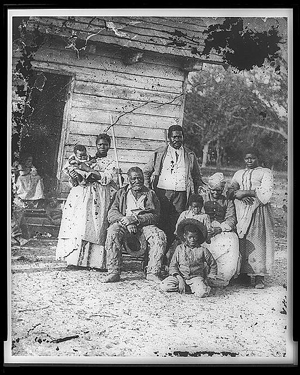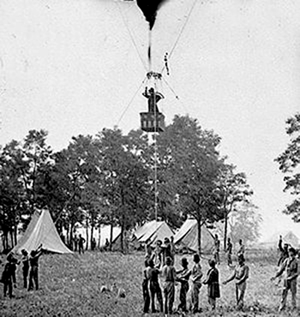WPA Slave Narratives Connected to Beaufort County
During the later years of the 1930s the WPA Slave Narratives Project was produced by the Federal Writers’ Project of the Works Project Administration after the Great Depression. The project was conducted in North Carolina, South Carolina, Ohio, Indiana, Georgia, Alabama, Florida, Mississippi, Arkansas, Missouri, Texas, and Oklahoma.
With the exception of Virginia, the majority of the interviewers were white and had a family history of slaveholding. Historians have questioned whether these interviewers, who were also family members of the major employers in the region, influenced the formerly-enslaved interviewees. Added to these concerns is the issue of memory worn by time and circumstances, especially for those suffering from ill effects of America’s Great Depression. Nevertheless, embedded in these interviews are accurate—sometimes frighteningly so—pictures of individuals’ pasts and family ancestries, which heretofore have been ignored by historians because of the paternalistic tone of the interviewees’ accounts.

In 1973, after working with Alex Haley on the Kinte Library Project, I had the fortune to meet Dr. Alice Eichholz. Alice and I created the Ethnic Genealogy Center at Queens College, City University of New York with the idea of developing projects dealing with ethnic Americans. It was here that the idea of “substantiating” the slave narratives began to evolve. Research began on genealogical extractions of around 300 narratives from the printed copies of the WPA Slave Narratives. The Ethnic Genealogy Center faculty and students began by extracting genealogical data such as birth, death, names of family members, and names of slave owners. The data were entered on index cards and around 400 were completed. I carried those cards of individuals from Virginia, North Carolina, and South Carolina when I relocated to Raleigh, North Carolina, in 1990.
The narratives tell the stories of slavery from the mouths of the ex-slaves and give us a new interpretation of the history of their homes. Several narratives are from towns in Beaufort County. Others, from other counties and states mention family and historical connections to this area.
Clark Heard was born in Georgia in 1851. He stated he was “but nine years old at the close of the Civil War.” He said:
I was born in August, 1851, on a 300-acre plantation in Troup County, Georgia. De plantation was five mile from Wes’ Point an’ jes’ twelve mile from La Grange—dat’s de county seat of Troup County. My father was Amos Heard, born in Charleston, South Carolina. Don’ know whar my mother, Delilah, was born—somewhar in Virginny.
Clark was located with his wife Carrie in the 1910 census of Jasper County, Georgia.
Several other subjects were interviewed in towns in South Carolina who, though outside of Beaufort County, hada direct connection to the Lowcountry. Andy Marion was in Sumter County when he heard about the firing at Fort Sumter. He lived on a plantation owned by Eugene Mobley that had seventy-two slaves living on it. During the Civil War, he worked with his master as a body servant in the fighting in Mississippi.

J. W. White (who when interviewed was an elder of Emanuel Church on Calhoun Street in Charleston) said:
The Lord give you three score an’ ten year to live. I born up Cooper river in ‘66, where me father was a farmer. He his own boss an’ a smart man too. It was free time den. Me father was a slave in Virginia. How he come to South Carolina I doan know but think may be he was sold. Me mother was a licker, she lash me every day fer exercise an I thank her fer it today, or I would a been in penitentiary. I belong to the old tribe that see things today that you never see befo’. This generation! I wouldn’t give ten cents for one of em.”
Before the War come here [Charleston] it was down in Beaufort, on the Port Royal Road; Confederates on one side, Yankees on the other.
Things happen here that belong to War. One evening, early dusk, because it was winter, I was with two white boys on the corner of Hasell Street and East Bay. We stopped to watch a balloon slowly floating in the sky. I never saw anything like it before—it looked so pretty—and while we were looking a streak of fire came straight down from the balloon to Russell’s Planing Mill at the foot of Hasell Street, right by us.
In a short time the mill was on fire; nothing could put it out. One place after another caught, and big flakes of fire were bursting up and flying through the air, and falling on other buildings. (illustrating with his arms, hands, and whole body) The first church that burned was the Circular Church on Meeting Street; then Broad Street and the Roman Catholic Church, and St. Andrews Hall.
Yes, Ma’am, ‘course I remember St. Andrews Hall, right next to the Roman Catholic Cathedral on Broad Street! That was 1861… That balloon went on down to Beaufort, I s’pose. Yes Ma’am, I saw it drop that fire on Russell’s Mill.
Melvin Smith of Beaufort, stated that his white folks lived in Beaufort, South Carolina.
That’s whar I was born. My old Miss, I called her Miss Mary, took care of me ‘till I was eight year old. Then she give me back to my ma. You see, it was this a-way. My ma an’ pa was sold in Beaufort; I don’t know whar they come from before that. When I was born Miss Mary took me in th’ big house with her an’ thar I stayed, jest like I told you, ‘till I was eight. Old Miss jest wanted me to be in th’ room with her an’ I slep’ on a pallet right near her bed. In the daytime I played in th’ yard an’ I pick up chips for old Miss. Then when I got most big enuff to work she give me back to my ma.
Then I live in a cabin like the rest of th’ niggers. Th’ quarters was stretched out in a line behind Marse Jim’s house. Ever’ nigger fam’ly had a house to theyselves. Me an’ my pa an’ ma, they names was Nancy an’ Henry Smith, live in a cabin with my sisters. They names was Saphronia an’ Annie. We had beds in them cabins made out of cypress. They looked jest like they do now. Ever’body cooked on th’ fire place. They had pots an’ boilers that hung ever th’ fire an’ we put th’ vittles in thar an’ they cooked an’ we at ‘em. ‘Course we never at so much in th’ cabin ‘cause ever mornin’ th’ folks all went to th’ field. Ma an’ Pa was field hands an’ I worked thar too when I got big enuff. Saphronia an’ Annie, they worked to th’ big house. All th’ nigger chillun stayed all day with a woman that was hired to take care of them.”
When asked about the kind of food they ate, Melvin replied:
We had enuff for anybody. Th’ vittles was cooked in great big pots over th’ fire jest like they was cookin’ for stock. Peas in this pot, greens in that one. Cornbread was made up an’ put back in th’ husks an’ cooked in th’ ashes. They called that a ash cake. Well, when ever ‘thing was done th’ vittles was poured in a troughan’ we all et. We had spoons cut out of wood that we et with. Thar was a big lake on th’ plantation whar we could fish an’ they show was good when we had ‘em for supper. Sometimes we go huntin’ an’ then we had possum an’ squirrel to eat. Th’ possums was best of all.
Hilton Head was also visited by the WPA and among the slaves they interviewed was ninety-six-year-old Lucretia Heyward. She told the interviewer:
W’en gun fust shoot [when guns first shoot] on Hilton Head Island, I been 22 year old. Muh Pa name Tony MacKnight and he b’long to Mr. Stephen Elliott. My Ma name Venus MacKnight and she b’long to Mr. Joe Eddings, who had uh plantation on Parris Island. De overseer been Edward Blunt.He been poor white trash, but he wuk haa’d and save he money and buy slave. He buy my Ma and bring she to Beaufort to wuk in he house by de Baptist chu’ch. I been born den. I hab seven brudder name Jacob, Tony, Robert, Moses. I can’t ‘member de odders, it been so long ago. I hab one sister Eliza—she die de odder day.
W’en I been little gal, I wuk in de house. Wuk all day. I polish knife and fork, mek bed, sweep floor, nebber hab time for play game. W’en I git bigger, dey send me to school to Miss Crocker to learn to be seamstruss.
Dey nebber learn me to read and write. I ain’t hab time for sech t’ing. I go to chu’ch in white Baptis’ chu’ch. Nigger hab for sit upstair, white folks sit downstair. If nigger git sick, dey send for doctor to ‘tend um. Mr. Blunt nebber lick me, but Miss Blunt cut my back w’en I don’t do to suit her. Nigger git back cut w’en dey don’t do wuk or w’en dey fight. Dey hab uh jail in town, run by Mr. McGraw. If nigger be too bad, run street and t’ing, he git in jail and Mr. McGraw lick um. I been lock in jail one time. Dey hang me up by wrist and beat me twenty-five lick wid uh cowhide. I forgit w’at I don’ to git dat.
W’en Yankee been come de Blunts leab Beaufort, and I walk out house and go back to Parris Island. De Yankee tell we to go en Buckra corn house and git w’at we want for eat. Den I come back to Beaufort and go to wuk in cotton house. De Yankee pay we for wuk and I tek my money and buy twenty acre ob land on Parris Island. I ain’t had dat land now ‘cause de Government tek em for he self and mek me move.
Lucretia can be found in the 1930 census.
Bluffton was also visited by the WPA workers, and they found Daphney Wright, knownaffectionately as “Aunt Affie.” The interviewer wrote: “She says she is 106 years old. She comes to the door without a cane and greets her guests with accustomed curtsey [courtesy?]. She is neatly dressed and still wears a fresh white cap as she did when she worked for the white folks. Save for her wearing glasses and walking slowly, there are no evidences of illness or infirmities. She has a sturdy frame, and a kindly face shows through the wrinkles.”
I been livin’ in Beaufort when de war fust [first] break out. Mr. Robert Cally [Corley] was my marsa. Dat was in October. De Southern soldiers come through Bluffton on a Wednesday and tell de white folks must get out de way, de Yankees right behind ‘em! De summer place been at Bluffton. De plantation was ten miles away. After we refugee from Bluffton, we spent de fust night at Jonesville. From dere we went to Hardeeville. We got here on Saturday evening. You know we had to ride by horses – in wagons an’ buggies. Dere weren’t no railroads or cars den. Dat why it take so long. I been right here when de Yankees come through. I been in my house asittin’ before de fire, jes’ like I is now.
One of ‘em come up an’ say, ‘…I is come to set you free. You kin stay wid your old owners if you wants to, but dey’ll pay you wages.
But dey sure did plenty of mischief while dey was here. Didn’t burn all de houses. Pick out de big handsome house to burn. Burn down Mr. Bill Lawton’ house. Mr. Asbury Lawton had a fine house. Dey burn dat. (He Marse Tom Lawton’ brother.) Burn Mr. Maner’ house.
Some had put a poor white woman in de house to keep de place; but it didn’t make no difference.De soldiers say, ‘Dis rich house don’t belong to you. We goin’ to burn [it]. Dey’d go through de house an’ take … anythin’ they could find. Take from de white, an’ take from de colored, too. Take everything out de house! Dey take from my house.
De white folks would bury de silver. But dey couldn’t always find it again. One give her silver to de colored butler to bury but he was kill, an’ nobody else know where he bury it. … Wheeler’s Brigade kill him.
Regarding these slave narratives, the Library of Congress notes on its Web site:
These stories are “a mélange of accuracy and fantasy, of sensitivity and stereotype, of empathy and racism that may sometimes be offensive to today’s readers. Yet whatever else they may be…[they] are themselves irreducibly historical, the products of a particular time and particular places in the long and troubled mediation of African-American culture by other Americans.”
Join The Library
As a Member, you will have full access to the library facilities, publications, classes and our online resources as well as the talents and expertise of our volunteers who will help with your research project.


